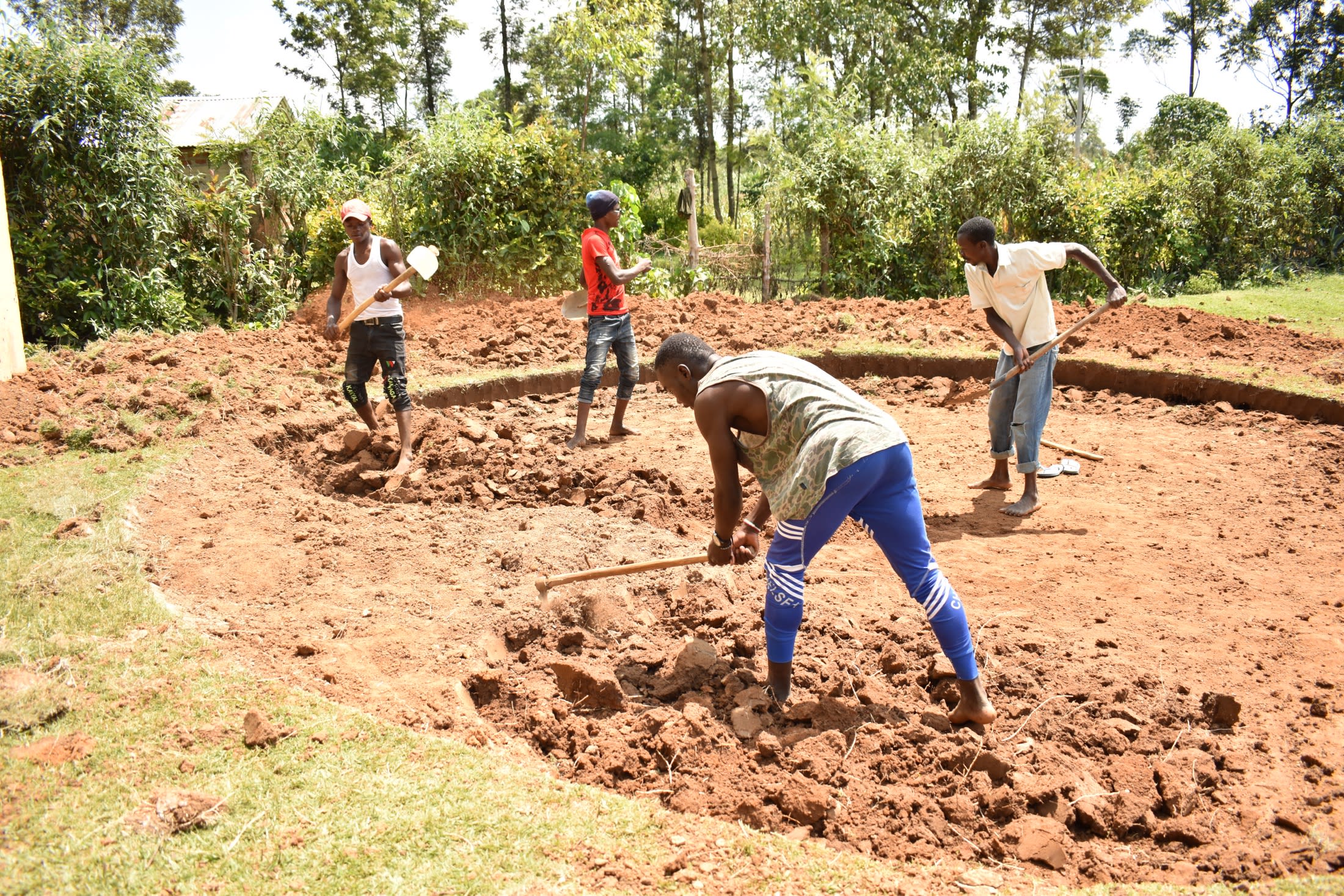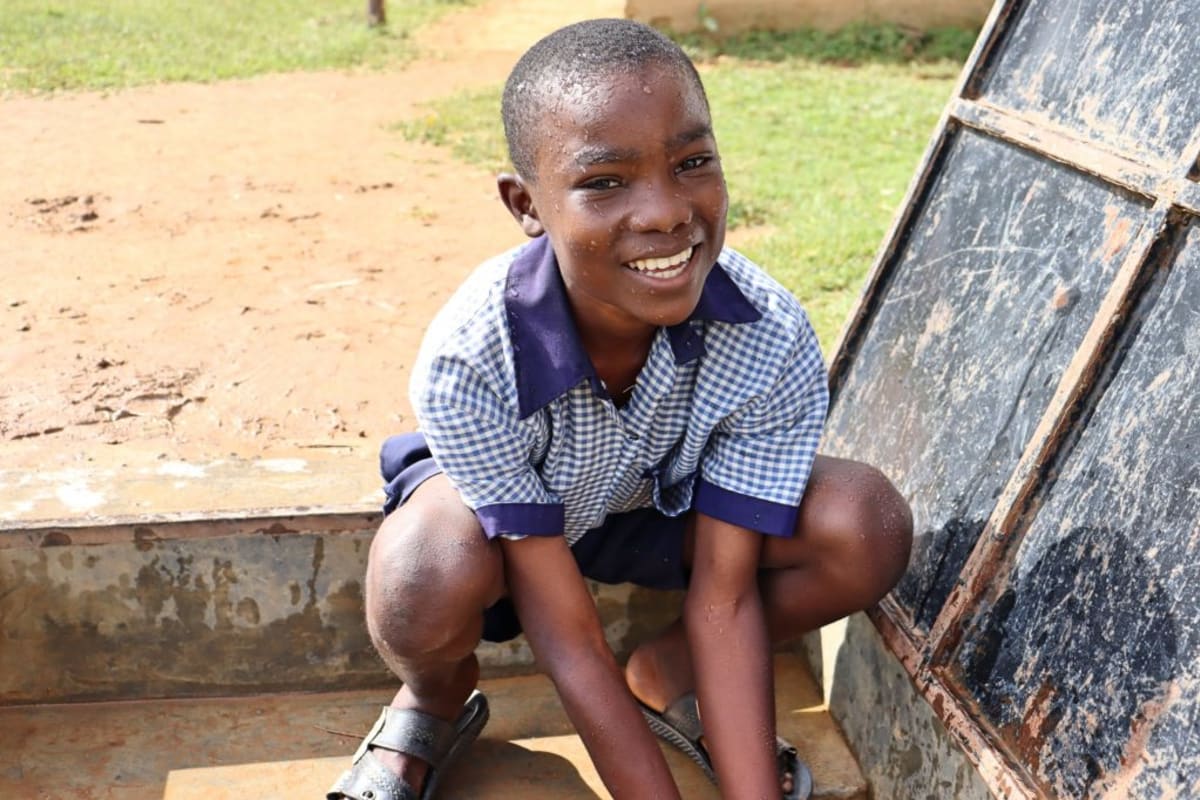The water crisis at St. Kizito Shihingo Primary School is dire. Established in 1998 by the local community members and sponsored by the Catholic Church, the school has never had a water source on campus. Today, serving 390 students and 20 teachers and staff, the school is on the brink of closure due, in part, to its lack of water. The national Ministry of Health issued the dreaded closure notice to the school in 2020, just before schools closed due to the pandemic. Now, they are on limited time to prove they can teach children in a safe and healthy environment.
Every morning after arriving at school, first to check-in for roll call, pupils head to a stream in the village. The students rely on the stream for water, leaving class to fetch it before they begin their studies, during break times, and in the evening before going home. All these trips are to carry back enough water to meet the entire school's drinking, cooking, and cleaning needs, but the water still runs out. Each day, the students find they spend more time on their trips to the spring than attending class lessons, damaging their academic performance.
The stream water is unquestionably unsafe for human consumption. The school does own a single Lifestraw filter, but with such high drinking water needs, the water students drink rarely made it through the filter. There is a high rate of waterborne and water-related diseases among both students and teachers, driving a high rate of absenteeism in return. These illnesses include typhoid, stomachache, and severe sore throat problems. Both teachers and pupils were also confirmed to have developed itchy skin rashes after using water from the stream.
"The water we draw from the stream is dirty and has a bad odor. Due to the lack of clean water in school, we are forced to drink it while at the stream without even filtering it. This has caused me to have an itchy skin disease which is so uncomfortable. Sometimes, I have also developed severe sore throat and stomach pains," said student Angela.
"Personally, I have been forced to be absent in school after contracting waterborne diseases including typhoid and stomachache. This is due to using dirty water from the passing stream. In most cases, I am forced to buy drinking water from the shops, which sometimes is expensive," said Richard Shichenga, the school's headteacher.
Access to the spring is a big concern among the teachers, who accompany students but cannot perfectly supervise each individually. Most pupils congest the stream to get back to class faster, but sometimes the smallest students are pushed out of safer collection areas. During the rainy season, the river surges, and the students risk being swept away in the water.
The rainy season also makes the quality of the stream water even worse. Runoff deposits dirt, farm chemicals, animal and human waste, and garbage into the water. Accordingly, water-related diseases and absenteeism reach their peaks at this school each rainy season.
What We Can Do:
Rain Tank
A 75,000-liter rainwater catchment tank will help alleviate the water crisis at this school. The school will help collect the needed construction materials such as sand, bricks, rocks, and water for mixing cement. We will complement their materials by providing an expert team of artisans, tools, hardware, and the guttering system. Once finished, this tank will begin catching rainfall used by the school’s students and staff for drinking, handwashing, cooking, cleaning, and much more.
The school and we strongly believe that all of these components will work together to improve standards at this school, which will help lead to better student academic performance and unlock the potential for these students to live better, healthier lives.
Handwashing Stations
The student health club will oversee the two new handwashing stations we will provide and ensure they are kept clean and in working condition. The club leaders will fill the handwashing stations with water daily and make sure they are always supplied with a cleaning agent such as soap or ash.
VIP Latrines
Two triple-door latrine blocks will be constructed with local materials that the school will help gather. Three doors will serve the girls, and three doors will serve the boys. These new latrines will have cement floors designed to be easy to use and clean. And with a rain tank right on school property, there should be enough water to keep them clean.
Training on Health, Hygiene, COVID-19, and More
We will hold a one-day intensive training session with students, teachers, and parents. This training will cover a wide range of topics, including COVID-19 symptoms, transmission routes, prevention; personal and environmental hygiene; and the operation and maintenance of the rain tank, latrines, and handwashing stations. There will be a special emphasis on handwashing.
Our team of facilitators will use various methods to train, including participatory hygiene and sanitation transformation and asset-based community development. We will initiate a student health club, which will prepare students to lead other pupils into healthy habits at school and home. We will also lead lectures, group discussions and provide illustrative handouts to teach health topics and promote good hygiene practices within the school, including handwashing and water treatment. We will then conduct a series of follow-up training before transitioning to our regularly scheduled support visits throughout the year.

 Rainwater Catchment
Rainwater Catchment
 Rehabilitation Project
Rehabilitation Project





































